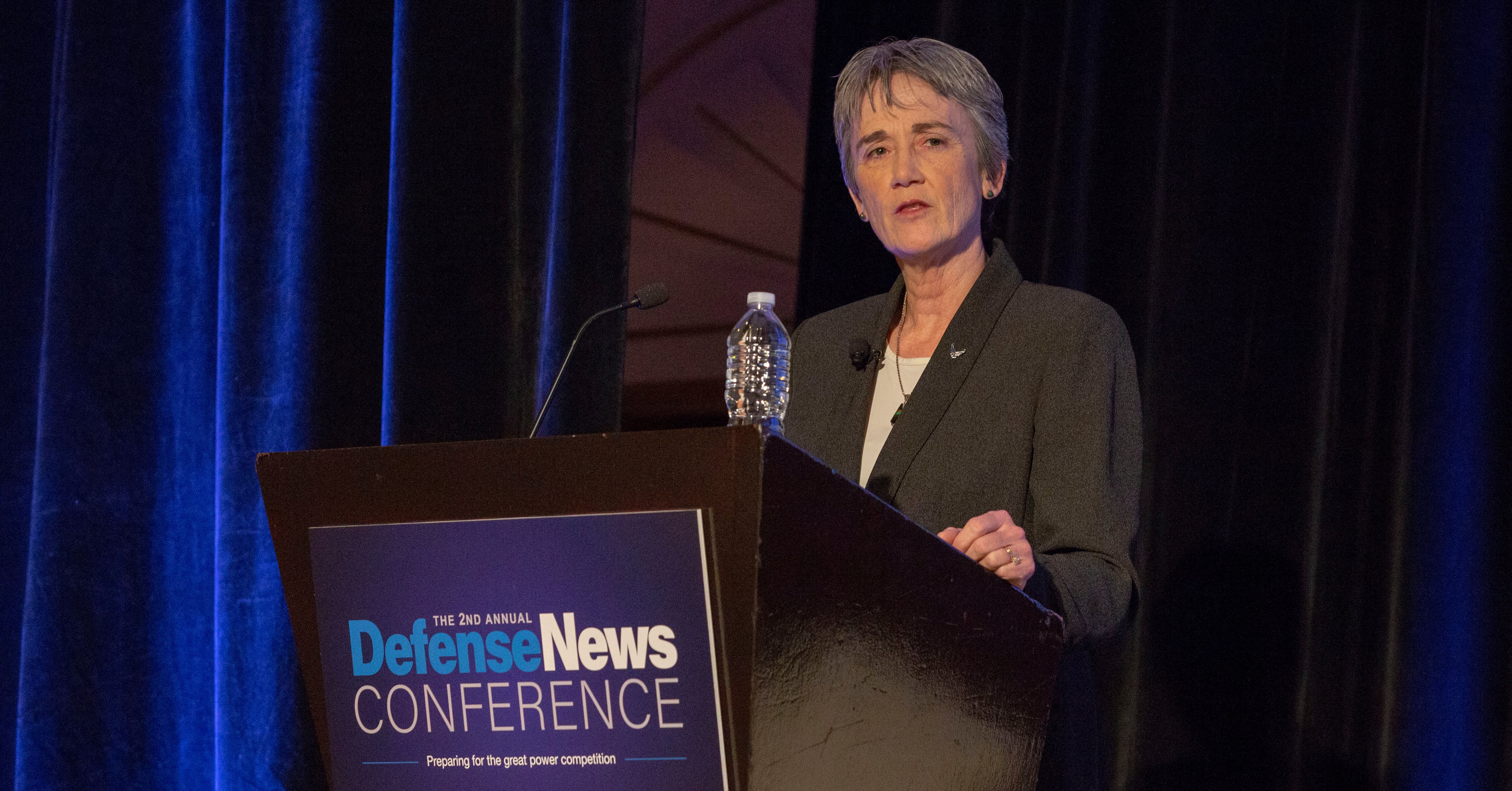Air Force Secretary Heather Wilson will resign at the end of May and take a job in academia.
The Air Force released a statement Friday morning, after Reuters broke the news of her impending resignation, that said Wilson will resign effective May 31, once the University of Texas Board of Regents officially votes to approve her as president of the University of Texas at El Paso. That approval is all but assured, as the regents Friday morning voted unanimously to make Wilson the sole finalist to be the UT El Paso president.
“It has been a privilege to serve alongside our airmen over the past two years, and I am proud of the progress that we have made restoring our nation’s defense,” Wilson said. “We have improved the readiness of the force; we have cut years out of acquisition schedules and gotten better prices through competition; we have repealed hundreds of superfluous regulations; and we have strengthened our ability to deter and dominate in space.”
In her resignation letter to President Trump, released by the Pentagon, Wilson said her May 31 resignation should allow enough time for a smooth transition.
“I very much appreciate the opportunity to have served,” Wilson said in her letter. “I remain a strong advocate for our nation’s defense and an airman for life.”
Trump tweeted out congratulations to Wilson Friday afternoon, said she “has done an absolutely fantastic job” as Air Force secretary, and thanked her for her service.
Wilson has been Air Force secretary for about two years, but her tenure has seemed precarious in recent months as she reportedly clashed with White House officials — and now-acting Defense Secretary Patrick Shanahan — over President Trump’s plans to create a Space Force. In October, Foreign Policy reported that Trump was planning to fire Wilson after the midterm elections over her perceived slow-rolling of his Space Force order. The report said Shanahan was particularly angered by Wilson’s Space Force position.
RELATED

But Wilson’s stock appeared to rise again, as the Pentagon decided to put the new Space Force under the Air Force. And Wilson’s name had been floated as a possible permanent secretary of Defense, succeeding former Sec. Jim Mattis. She remained close with Vice President Mike Pence, who she served alongside in Congress. Pence made a surprise appearance with Wilson at last September’s Air Force Association conference in National Harbor, Maryland.
Wilson is the first Air Force Academy graduate to serve as Air Force secretary, and she has a close relationship with Chief of Staff Gen. Dave Goldfein, also an academy graduate. Together, they made the case for expanding the Air Force by 74 squadrons as part of the Pentagon’s overall shift to focus on so-called “great power competition,” and away from fighting violent extremists in places like the Middle East.
On many occasions, Wilson sounded the alarm about an overstretched Air Force — especially after years of sequestration-driven cuts — and worried that airmen were being asked to do much. In a November 2017 press conference, Wilson and Goldfein worried that repeated deployments were going to burn out airmen and could even break the force.
“It is not fair for this nation to ask our commanders to keep saying ‘We got this’ right up to the point of failure, because we don’t got this,” Wilson said at the September 2017 AFA conference.
In a tweet Friday, Goldfein praised Wilson and wished her the best, and said the Air Force “hit the lottery” when she was chosen as secretary.
She graduated from the academy in 1982, as part of the third class in history that admitted women as cadets. She left the4 Air Force in 1989 to join the National Security Council as its director for European defense policy and arms control, and represented New Mexico in the House of Representatives from 1998 to 2009. She retired from the House after losing the 2008 Republican Senate primary in New Mexico.
Her move to UT El Paso will be a return to academia. Before becoming Air Force secretary, Wilson, originally from Keene, New Hampshire, served as president of the South Dakota School of Mines and Technology in Rapid City, South Dakota, from 2013 to 2017.
Stephen Losey is the air warfare reporter for Defense News. He previously covered leadership and personnel issues at Air Force Times, and the Pentagon, special operations and air warfare at Military.com. He has traveled to the Middle East to cover U.S. Air Force operations.







